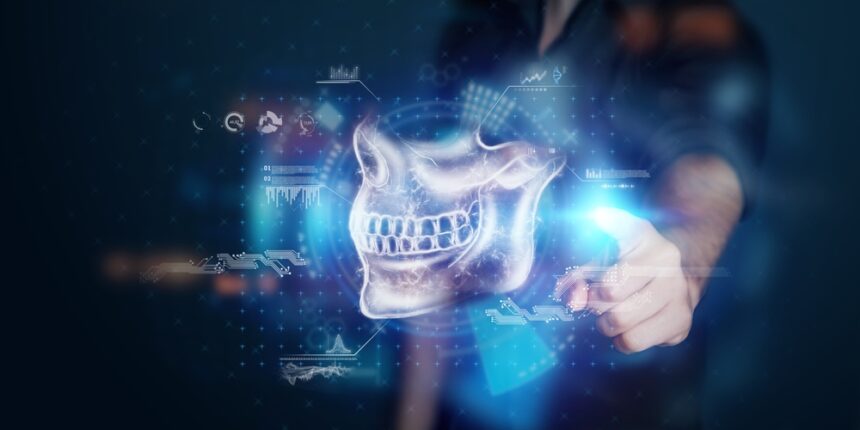The integration of laser technology into dental practice has revolutionized how oral health care is delivered. Renowned for its precision and minimal invasiveness, laser dentistry stands at the crossroads of art and science, offering enhanced outcomes for various dental procedures. That said, this article will explore how it transforms cosmetic dentistry practice in today’s world.
The Evolution Of Laser Dentistry
Laser dentistry’s inception dates back to the mid-20th century, yet it remains at the forefront of modern dental techniques. Significant milestones have marked its evolution, each contributing to a more comfortable patient experience.
- Advancements In Precision
Lasers offer unmatched accuracy, allowing dentists to target and treat specific areas without affecting surrounding tissues. This precision is particularly beneficial in cosmetic dentistry, where aesthetic outcomes are paramount.
- Minimally Invasive Procedures
The technology’s non-invasive nature is one of its most lauded features. Procedures that once required extensive recovery now boast swift healing, thanks to the lasers’ gentle approach.
The Benefits of Laser Dentistry
Laser Dentistry benefits dentists and significantly improves the patient’s experience. Here’s a list of its advantages:
1. Painless Procedures
Laser Dentistry is renowned for minimizing discomfort during and after treatments. This is beneficial for patients who may have dental anxiety or fear of pain.
The precision of laser technology allows dentists to work on specific areas without affecting surrounding healthy tissue. In many cases, it eliminates the need for anesthesia, making the entire dental experience more comfortable and stress-free for patients.
2. Reduced Healing Time
One of the remarkable advantages of laser treatments is their ability to promote faster healing and tissue regeneration. Traditional dental procedures can result in significant trauma to the treated area, leading to prolonged recovery times.
Fortunately, laser dentistry minimizes this trauma, allowing tissues to heal more quickly. Patients can return to their daily routines sooner, with less downtime and discomfort.
3. Increased Precision
The pinpoint accuracy offered by laser dentistry is a game-changer for dentists. With traditional tools, there’s always a risk of affecting healthy tissue while targeting a dental issue.
In contrast, lasers allow dentists to target the affected area precisely, preserving more of the surrounding healthy tissue. This ensures more effective treatment and minimizes the risk of complications.
4. Less Swelling And Bleeding
Laser dentistry significantly reduces swelling and bleeding during and after procedures. The high-energy laser beams cauterize blood vessels as they work, which means less bleeding during the treatment.
Moreover, the laser’s precision minimizes tissue damage, reducing post-operative swelling. This reduction in discomfort is a significant benefit for patients, as it contributes to a quicker and more pleasant recovery process.
5. Minimized Discomfort
Patients often experience less post-operative discomfort with laser dentistry. The laser not only seals blood vessels but also nerve endings during treatment. Patients are less likely to experience prolonged pain or sensitivity following a procedure. The overall experience is more comfortable, and recovery is smoother.
Applications Of Laser Dentistry
The applications of laser technology in dentistry are diverse; its applications span a wide range of dental procedures, such as the following:
1. Gum Disease Treatment
Laser technology is highly effective in treating gum diseases such as gingivitis and periodontitis. The laser can precisely remove infected tissue and bacteria while promoting gum reattachment. Patients benefit from faster healing and reduced discomfort compared to traditional gum surgery.
2. Teeth Whitening
Laser teeth whitening is a popular cosmetic procedure with quick and impressive results. The laser activates a special whitening agent, accelerating the whitening process. Patients leave the dentist’s office with a noticeably brighter and whiter smile in a single visit.
3. Cavity Detection
Lasers are invaluable tools for early cavity detection. They can identify cavities very early, allowing dentists to address them before they worsen. This proactive approach to dental care helps prevent more extensive and costly treatments down the road.
4. Oral Surgery
Laser Dentistry is commonly used in various oral surgery procedures, including gum surgeries and tissue removal. The precision and reduced trauma associated with laser technology make it a preferred choice for dentists and patients.
5. Root Canal Therapy
Laser technology is employed in endodontic procedures like root canal therapy. It can disinfect and shape the root canal more effectively than traditional methods, ensuring thorough cleaning and reducing the risk of infection.
The Future Of Laser Dentistry
The landscape of laser dentistry is teeming with potential, and its future appears exceedingly promising. This section will delve into the exciting prospects and innovations that await dentists and patients as laser dentistry marches confidently towards the future.
- Enhanced Precision And Effectiveness
Ongoing research and development efforts are laser-focused on refining laser technologies to operate with even greater accuracy. This means dentists will have the tools to perform procedures with microscopic precision, leaving healthy tissues virtually untouched while addressing dental issues with unprecedented effectiveness.
- Shorter Recovery Times
Imagine a dental procedure where the recovery time is not measured in days but in hours or even minutes. This vision is becoming increasingly attainable with the continual advancement of Laser Dentistry. The future promises shorter recovery times for patients, thanks to lasers’ ability to minimize trauma during treatment. Tissues heal faster, and patients can return to their daily routines without prolonged discomfort.
- Expanding Applications In Cosmetic Dentistry
Innovations in laser technology are expected to open new horizons for cosmetic procedures. From more effective and comfortable teeth whitening to minimally invasive smile makeovers, the future of cosmetic dentistry holds the promise of even more stunning and natural-looking results.
Conclusion
Laser dentistry is not just a testament to technological innovation; it’s a discipline where art and science converge to enhance oral health care. With its ability to deliver precise, comfortable, and aesthetically pleasing results, laser dentistry is a beacon of progress in dental medicine, ensuring that patients receive the highest standard of care with ‘A Light Touch.’

